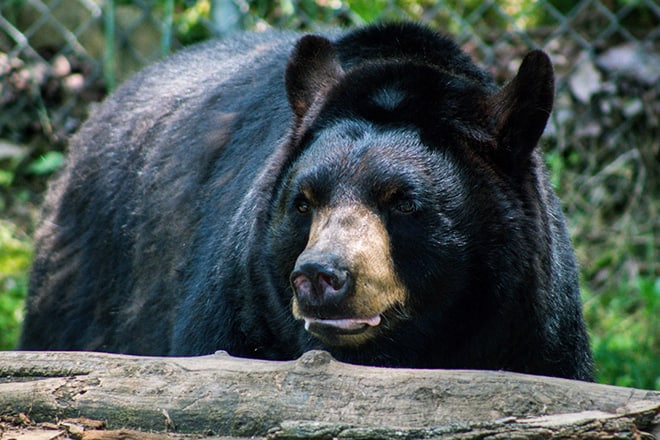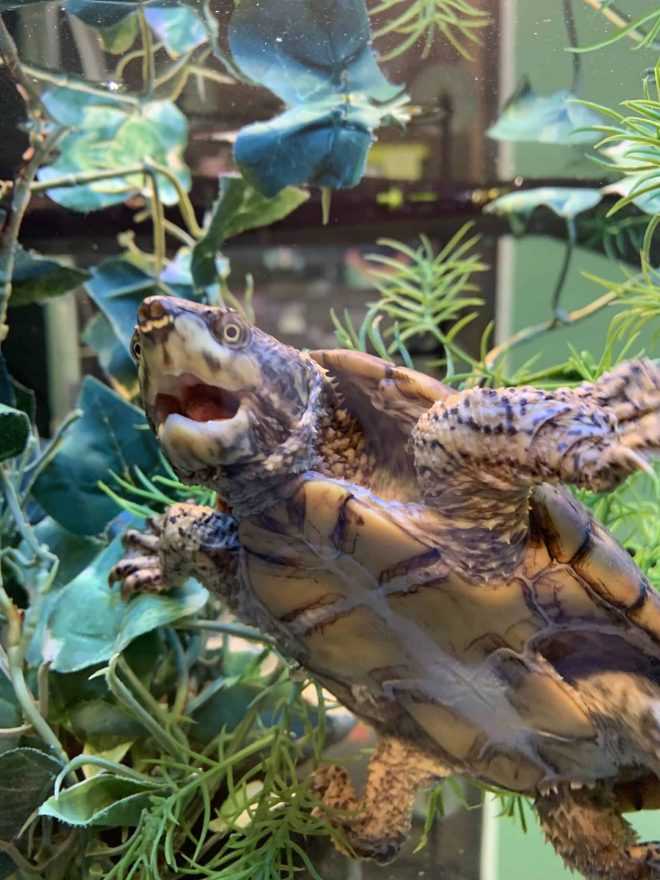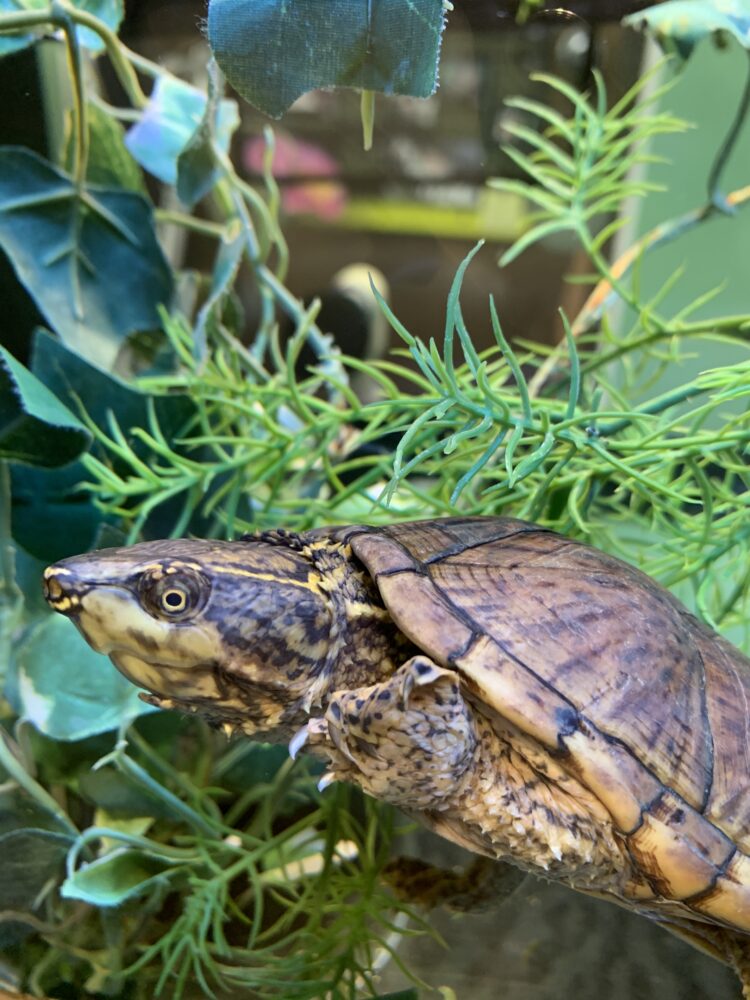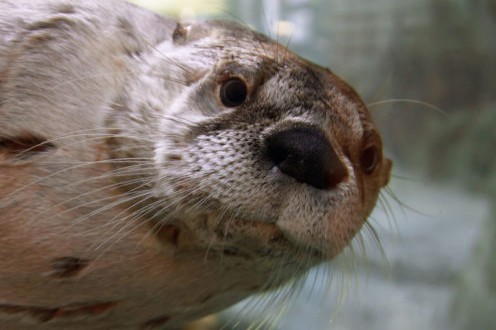
American Black Bear
Generally shy and reclusive animals, black bears avoid human contact and are not normally aggressive. Two black bears, Uno and Ursa, live at the Nature Center.
Open 361 Days a Year: Admissions 10:00am – 3:30pm; park closes at 4:30pm
Reservations are not required, and tickets do not need to be purchased online in advance.

Sternotherus odoratus
Appearance: Eastern musk turtles are a dark brown with yellow stripes on their head. They also have a dark brown carapace or shell that has a ridge down the center. Eastern musk turtles also have smaller plastrons (the part of their shell on their belly) to better crawl through slow-moving water. In the wild, eastern musk turtles live for up to 20 years. In captivity, they have been known to live 50+ years.
Behavior: Eastern musk turtles, also known as stinkpot turtles, are named after the strong smell they produce as self-defense. They spend most of their time in the water but will bask on logs. They live in slow-moving waters with plenty of vegetation. Eastern musk turtles aren’t the best swimmers and instead “walk” along the bottom and hide under sunken logs and debris. To help them spend so much time underwater, the eastern musk turtle has tiny buds called papillae that draw in oxygen from the water, similar to the gills on a fish.
Range: They are found on the eastern side of North America from Ontario to Canada to Texas. They live all throughout North Carolina.
Diet: Common musk turtles are omnivorous and feed on small animals, insects, aquatic plants, and carrion.

Linus
Date of Birth: Unknown
Linus came to the WNC Nature Center in 2008 after being rehabilitated.

Generally shy and reclusive animals, black bears avoid human contact and are not normally aggressive. Two black bears, Uno and Ursa, live at the Nature Center.

Red wolves are highly endangered species that has been eliminated from almost all of its natural range. Our breeding pair of red wolves, Oak and Gloria, are part of the AZA Species Survival Plan.

Similar to the Nigerian dwarf goat, the American pygmy is a small goat that only reaches 1-2 feet in height. They vary widely in coloration including white, tan, caramel, gray, and black.

River otters are masterful in the water and often show a playful side!
WNC Nature Center
75 Gashes Creek Road
Asheville, NC 28805
Getting Here
General Inquiries
828-259-8080
admin@wildwnc.org
Friends of the
WNC Nature Center
PO Box 19151
Asheville, NC 28815
828-259-8092
See what’s new at the zoo
with monthly updates!
©2019 Friends of the WNC Nature Center | All rights reserved
Website design by BECK Digital